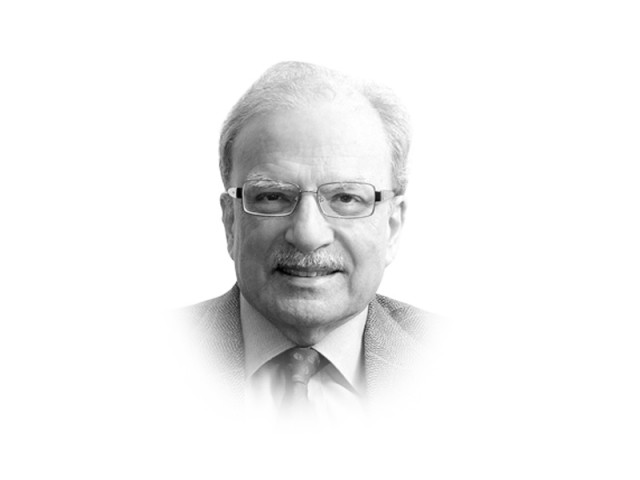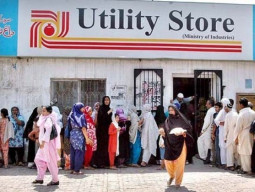
Modi had done well in the state of Gujarat in India’s west, which he had led for a dozen years as its chief minister. The state had a well-deserved reputation for entrepreneurship. With the private sector in the lead, Modi’s state had performed better than the rest of India, and done so by a wide margin. He promised to bring the Gujarat model to New Delhi and the electorate believed him. Late last May, he was installed as prime minister in a ceremony performed not inside an office, as was the custom, but outside in the open with thousands of admirers watching. Among those who attended the well-choreographed ceremony, were the heads of state and governments from the Saarc nations. Prime Minister Nawaz Sharif also attended. Modi had begun well.
Once in office, the new prime minister turned his formidable energy to foreign affairs. He was convinced — and wanted to convince the world leaders — that India was a large and vibrant nation that should be regarded as a world power. He travelled widely; in the first 15 months in office, he visited or met with more world leaders than was done in 10 years by Manmohan Singh, his predecessor. Among those who accepted his claim was US President Barack Obama. A special relationship developed between the two. Modi visited Washington and was warmly welcomed by the American president who took him on a walk through the grounds of the Martin Luther King Memorial. Touched by the gesture, Modi invited Obama to visit India to celebrate his country’s Republic Day in January 2015. The invitation was accepted and Obama sat next to the Indian prime minister while tanks, missiles and other heavy equipment of the well-resourced Indian Army rolled by in a parade of military might.
It was expected that Modi, despite his strong links with the RSS, the Hindu extremist organisation, will seek improved relations with Pakistan, India’s northwestern neighbour. That did not happen. On August 24, 2015, Pakistan, reacting to what it called unacceptable conditions for the talks that had been scheduled between the national security advisers of the two countries cancelled the discussions. In announcing Pakistan’s withdrawal from the planned discussions, India was reminded that it should not trifle with a nuclear-armed state. India-Pakistan relations had reached a new low.
While Modi made an impression in world affairs, the promised reform of the economy needed to reach China-like rates of growth was not undertaken. In his ‘Made in India’ drive to accelerate as well as modernise India’s manufacturing sector, the prime minister had promised to bring his country to the same level as the more industrialised nations. But the slogan was a tough sell. The share of manufacturing in the economy peaked in the mid-1990s. “It will take more than the glad-handing of world leaders to revive it,” wrote The Economist’s Schumpeter blog. “The roots of malaise go back to 1991, when India opened up markets for goods to competition, including from imports, but left its ‘factor’ markets for land, labour and capital unreformed. Indian-based factories suddenly needed to be bigger and better-equipped to compete in a global market. But the cost of capital, high in an inflation-prone India, was forced to be still higher because of the trouble banks had in pursuing deadbeat borrowers through clogged courts. Complex laws made it tricky to acquire farmland for industry or infrastructure. Baffling labour laws, written largely in the 1940s, piled onerous regulations on manufacturers. Because they made it hard to lay off workers, few were hired.” The prime minister had pledged to vault India into the top 50 countries in the World Bank’s ease-of-doing business ranking. In the latest assessment, it ranked 142nd.
By the end of August 2015, citizens began to take to the street which they always did to vent their frustration. There were large demonstrations in Mumbai as the price of onions, a staple of Indian diet, soared. On August 26, there were riots that led to six deaths in Ahmedabad, the capital of Gujarat, as the upper-class unemployed clashed with those belonging to the ‘other backward classes’, wanting the repeal of the laws that granted the latter employment preferences. Hindu nationalists were also agitated when the government revealed that for the first time in the history of independent India, the proportion of Hindus had fallen below 80 per cent of the total. The Muslim share had increased to 14.25 per cent. Fearing reaction, this revelation was delayed by the government for months.
There was a lesson from all of this: the world stage may be more appealing and it may be easier to adopt a tough stance towards Pakistan, but the real action was on the domestic front. Unless that was done, Modi may not realise his dream of gaining the great power status for his country.
Published in The Express Tribune, August 31st, 2015.
Like Opinion & Editorial on Facebook, follow @ETOpEd on Twitter to receive all updates on all our daily pieces.













COMMENTS
Comments are moderated and generally will be posted if they are on-topic and not abusive.
For more information, please see our Comments FAQ